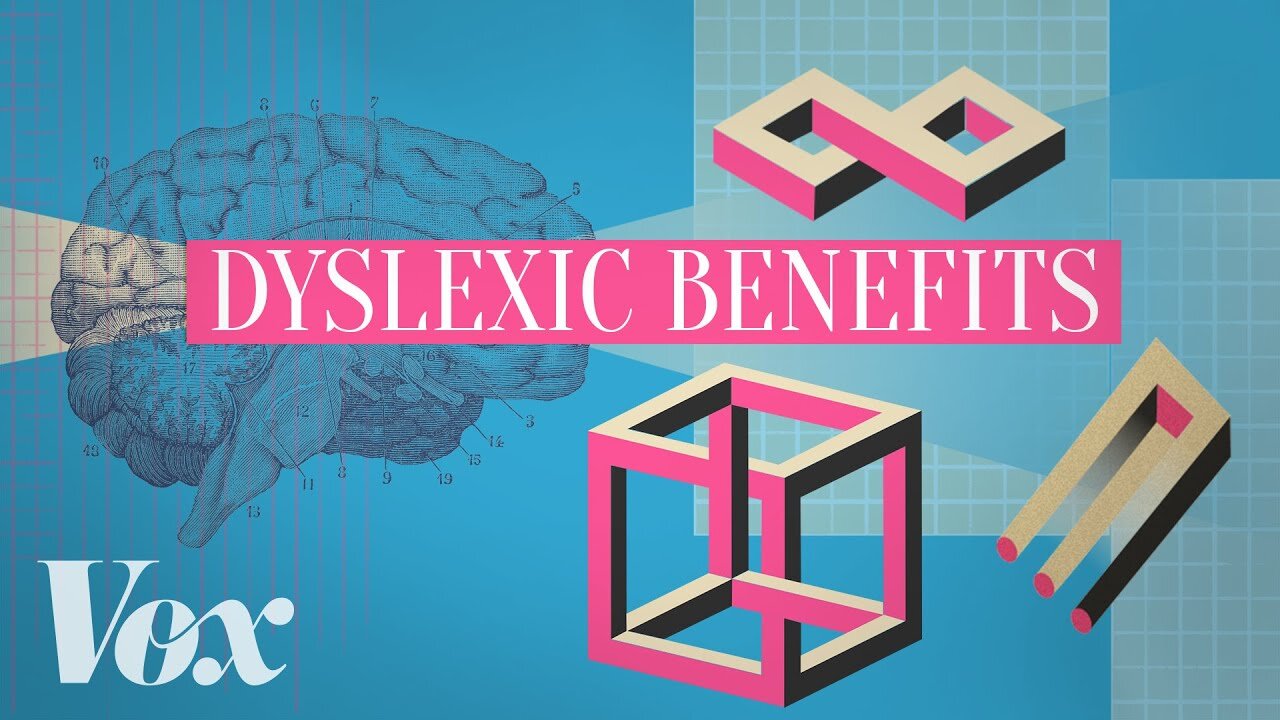Premium Only Content

Why the dyslexic brain is misunderstood
How dyslexia is a differently organized brain.
The brain isn’t naturally wired to read. It’s a task that requires explicit instruction for our brains to activate different areas, including those that control vision, sound, and meaning. For fluent readers, the result is a complicated reading circuit — connected by neural pathways of white matter — to allow us to process words within milliseconds. But this reading circuit looks different for people with dyslexia.
For decades, the research was largely focused on how this different brain organization often resulted in delays and difficulty in areas like reading, spelling, and grammar. And today, there continues to be stigma and misconceptions around a dyslexia diagnosis.
But the challenges of dyslexia often overshadow another part of the picture. Research has repeatedly shown dyslexia is also associated with specific cognitive strengths. These include visuo-spatial processing, narrative memory, problem-solving, and reasoning. While there is still a lot to learn about these advantages and how they work, in the piece above we unpack what we know about dyslexia, and what many studies have concluded about these strengths.
This perspective could be critical — not just for the roughly 20 percent of people who have dyslexia — but for the colleagues, peers, and educators who can better empower dyslexic thinking and better understand neurodiversity.
-
 LIVE
LIVE
TimcastIRL
2 hours agoDemocrat CAUGHT ON TAPE ADMITTING To Corruption, CHEATING ON WIFE Says Nick Sortor | Timcast IRL
13,671 watching -
 LIVE
LIVE
Man in America
7 hours agoTrump to BAN the COVID Vaxx?! mRNA in Your Organic Meat?! w/ Kim Bright
959 watching -
 LIVE
LIVE
Flyover Conservatives
21 hours agoThe Great Gold Cover-Up: Is Fort Knox EMPTY?! - Clay Clark + Dr. Kirk Elliott | FOC Show
2,076 watching -
 1:24:40
1:24:40
Kim Iversen
5 hours agoJeffrey Sachs Just Exposed the Truth They Don’t Want You to Hear
25.4K32 -
 2:11:32
2:11:32
Glenn Greenwald
3 hours agoGlenn From Moscow: Russia Reacts to Trump; Michael Tracey Debates Ukraine War | SYSTEM UPDATE #413
35.7K36 -
 LIVE
LIVE
Slightly Offensive
3 hours ago $2.41 earnedGOV. RAMASWAMY? Vivek to import 1 BILLION INDIANS to OHIO | Nightly Offensive
939 watching -
 4:51:08
4:51:08
Wahzdee
6 hours agoSniper Elite Then Extraction Games—No Rage Challenge! 🎮🔥 - Tuesday Solos
52.8K3 -
 2:12:58
2:12:58
Robert Gouveia
5 hours agoSenator's Wife EXPOSED! Special Counsel ATTACKS; AP News BLOWN OUT
61.5K40 -
 55:07
55:07
LFA TV
1 day agoDefending the Indefensible | TRUMPET DAILY 2.25.25 7PM
26.1K13 -
 6:09:26
6:09:26
Barry Cunningham
12 hours agoTRUMP DAILY BRIEFING - WATCH WHITE HOUSE PRESS CONFERENCE LIVE! EXECUTIVE ORDERS AND MORE!
70.2K48